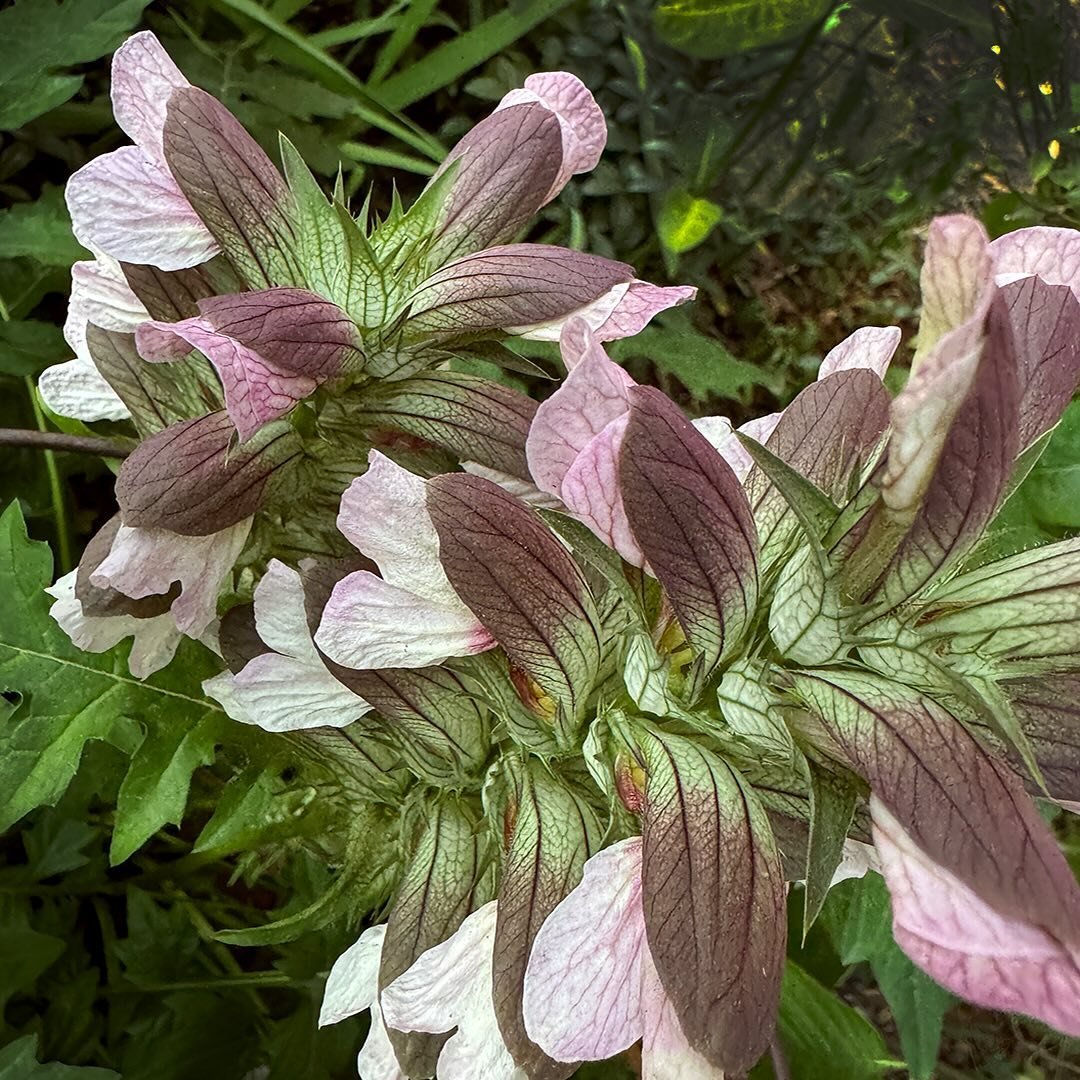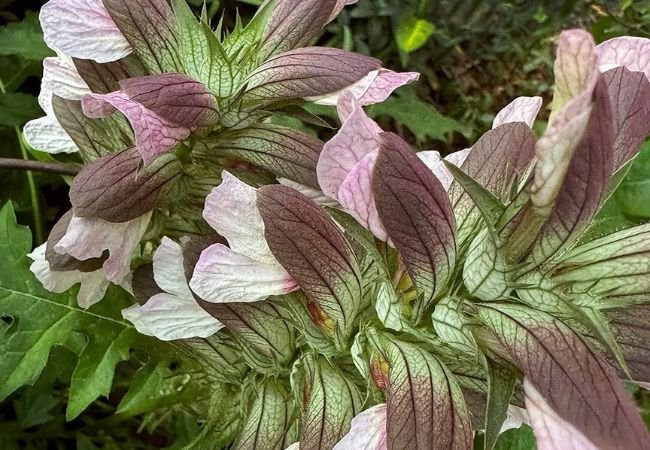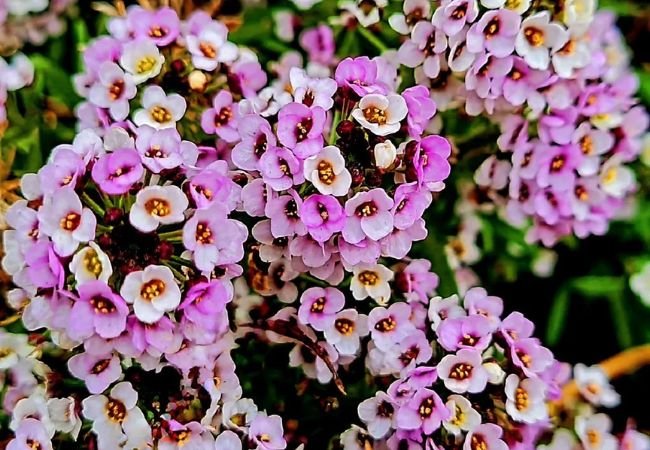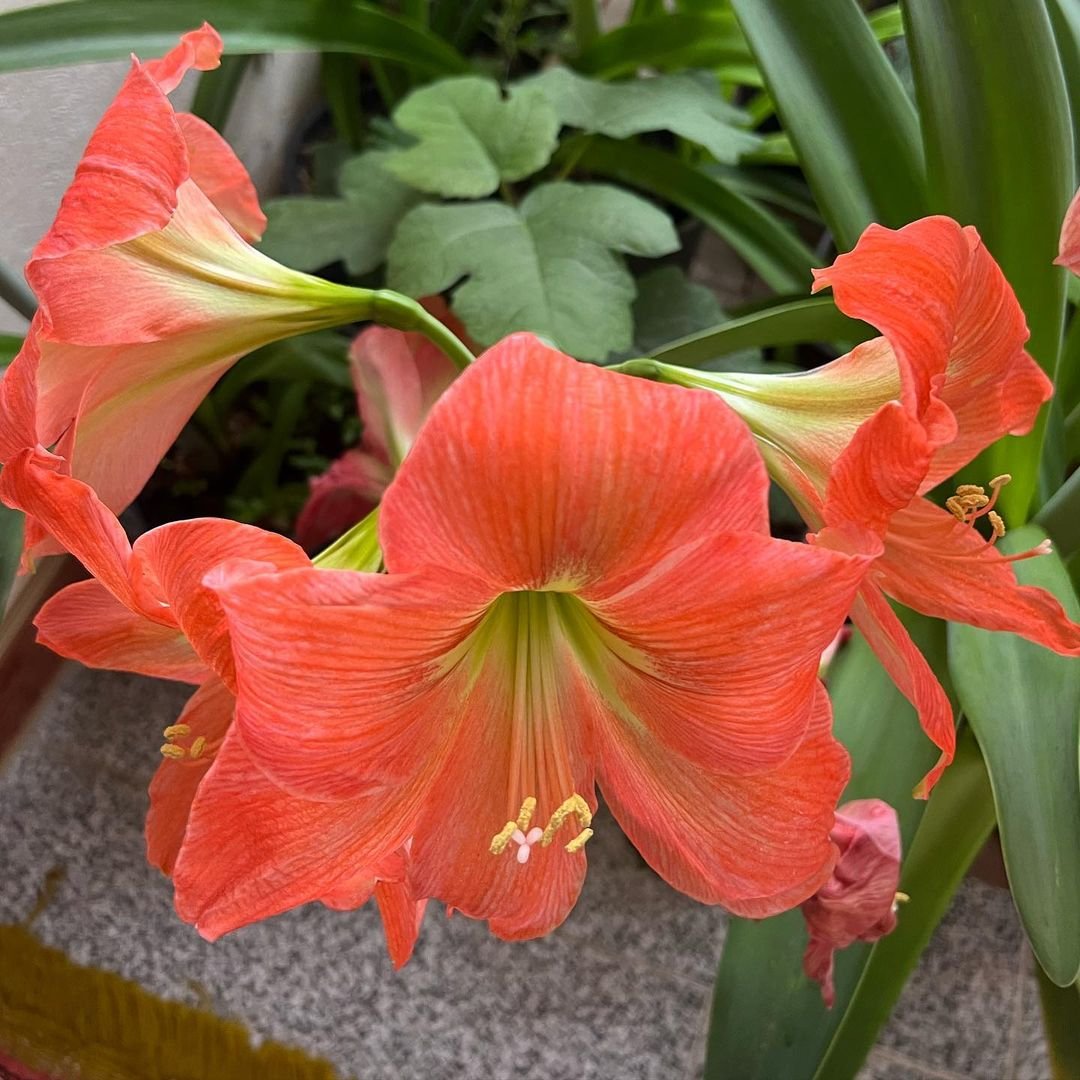Discover expert tips on growing and designing with acanthus flower, including flame acanthus, acanthus spinosus, and bear’s breeches. Learn from my 10 years of gardening experience at USA Garden Hub.
Hi, I’m Anna Scott—a dedicated gardener with 10 years of hands-on experience nurturing a wide variety of plants. Today, I’m excited to share my comprehensive guide on the acanthus flower. Whether you’re new to gardening or a seasoned enthusiast, this article will answer your questions, share practical care tips, and offer creative design ideas to help you incorporate this stunning plant into your outdoor space.
In this guide, we’ll cover:
- What is the Acanthus Flower?
- A Brief History and Significance
- Varieties and Key Characteristics
- Growing Conditions and Care Tips
- Garden Design Ideas Featuring Acanthus
- Common Problems and Troubleshooting
- My Personal Gardening Experiences
- Additional Resources and Learning Opportunities
Let’s get started!
Here’s an information chart for Acanthus flowers (Acanthus spp.):
| Aspect | Details |
|---|---|
| Botanical Name | Acanthus spp. |
| Common Name | Acanthus, Bear’s Breeches |
| Plant Type | Perennial |
| Hardiness Zone | Zones 6-10 |
| Sun Exposure | Full sun to partial shade |
| Soil Type | Well-drained, fertile |
| Watering | Moderate |
| Growth Habit | Clumping, upright |
| Height/Spread | 3-5 feet tall, 2-3 feet wide |
| Special Features | Large, deeply lobed leaves; tall spikes of white or purple flowers with spiny bracts; architectural interest in gardens |
What Is the Acanthus Flower?

The acanthus flower is much more than an ornamental plant; it’s a piece of living art that has inspired architectural designs and garden layouts for centuries. Known for its dramatic, sculptural leaves and sometimes striking blooms, acanthus brings both texture and timeless elegance to any garden. Often recognized by its distinctive acanthus leaves, this plant serves as a focal point in formal and informal settings alike.
In many gardens, you might come across names like flame acanthus, acanthus spinosus, or even bear’s breeches. Each of these terms refers to different varieties or common names used to describe plants within the acanthus family. As you explore this guide, you’ll notice that the diverse characteristics of acanthus make it an ideal candidate for various garden designs—from traditional landscapes to modern container gardens.
A Brief History and Significance
The acanthus plant has a rich history steeped in classical art and architecture. Its distinctive leaves have adorned the capitals of Corinthian columns since ancient times—a symbol of beauty and resilience that transcends eras. When I first learned about its storied past, I was fascinated by how this plant connected ancient design with modern horticulture. Incorporating acanthus into your garden is not just about planting a flower; it’s about inviting a living piece of history into your landscape.
For a deeper look into the historical significance of ornamental plants, you can explore resources from:
Varieties and Key Characteristics
One of the aspects I love most about acanthus is its variety. Each type offers a unique twist to garden design, making it possible to choose the one that best fits your aesthetic and growing conditions. Let’s explore some of the most popular varieties:
Acanthus Mollis
Often simply referred to as the acanthus flower, acanthus mollis is celebrated for its large, deeply lobed leaves and elegant flower spikes. This variety is a favorite in traditional garden settings where its classic look complements stately architectural elements.
Flame Acanthus
The flame acanthus plant stands out with its vibrant, fiery blooms that seem to light up the garden. Its dramatic flower color creates a striking contrast with the dark, rich tones of the acanthus leaf, making it a natural choice if you’re looking to add a pop of color.
Acanthus Spinosus and Bear’s Breeches
Known for their robust and often spiny foliage, acanthus spinosus varieties are commonly referred to as acanthus spinosus bear’s breeches or acanthus bear’s breeches. These plants add a bold, textured look to any garden bed and are particularly valued for their hardiness and architectural presence.
Acanthus Whitewater
Though less common, acanthus whitewater is prized for its lighter, almost silvery-green foliage. This subtle variation can create a softer, more delicate appearance when contrasted with more vibrant garden companions.
Each variety offers something unique to the table. When choosing among them, consider your garden’s climate, soil conditions, and design preferences. I often recommend experimenting with different types to see which one truly transforms your outdoor space.
For additional botanical insights, check out the resources at:
Growing Conditions and Care Tips
With my decade of gardening experience, I’ve learned that understanding your plant’s needs is key to success. Here’s what you need to know about cultivating healthy acanthus:
Soil Requirements
Acanthus thrives best in well-draining soil enriched with organic matter. I always start by amending my garden beds with compost to ensure a nutrient-rich, aerated environment. It’s essential to avoid waterlogged soils that might lead to root rot.
- Tip: Acanthus prefers slightly acidic to neutral soil (pH 6.0–7.0). You can easily test your soil with a home kit or by sending a sample to your local extension service.
Light and Watering
Most acanthus varieties prefer partial shade to full sun. For example, when planting flame acanthus or acanthus spinosus, I choose locations that offer morning sun and afternoon shade. This balance helps protect the plant from the intense midday heat while ensuring it receives enough light.
Watering should be deep but infrequent—allowing the top layer of soil to dry out between sessions is crucial. This not only encourages deep root growth but also helps prevent overwatering issues.
Fertilization and Mulching
A balanced, slow-release fertilizer applied in early spring can give your acanthus the boost it needs. I also recommend mulching around the base of the plant with a 2-3 inch layer. Mulch helps retain moisture, suppress weeds, and gradually improves soil quality as it decomposes.
Pruning and Maintenance
Occasional pruning is important for maintaining the plant’s shape and health. I remove any dead or damaged leaves to encourage new growth. In some cases, a light trim after flowering can help the plant maintain a more compact, attractive form.
For expert pruning techniques, consider checking out guidelines from:
Garden Design Ideas Featuring Acanthus
Acanthus isn’t just a plant—it’s a design element that can elevate the look and feel of your garden. Here are some creative ways to incorporate acanthus into your landscape:
Formal Garden Accents
The classical look of the acanthus leaf makes it perfect for formal gardens. I love using acanthus as a framing plant along pathways or near water features. Its stately presence and timeless beauty create a sense of order and elegance that works wonderfully with structured landscapes.
- Internal Link: Explore Landscape Design Tips on USA Garden Hub for more ideas on creating formal outdoor spaces.
Cottage Gardens and Naturalistic Settings
For a more relaxed and informal look, acanthus blends seamlessly into cottage gardens. The plant’s robust foliage pairs well with other perennials and flowering shrubs, adding depth and texture. I’ve found that mixing acanthus spinosus bear’s breeches with native wildflowers results in a vibrant, inviting garden scene.
- Internal Link: Check out our Plant Guides for advice on mixing and matching various garden plants.
Container and Patio Gardening
Acanthus can also be a great choice for container gardening. Its sculptural form makes it a striking addition to patios, balconies, or small courtyards. When planting acanthus in containers, use a well-draining potting mix and ensure that your container has ample drainage holes.
- Internal Link: Visit our Indoor Gardening section for more tips on container care and design.
Combining with Other Ornamentals
Another fun way to use acanthus is by combining it with other ornamental plants. The contrasting textures of the flame acanthus plant against softer blooms can create a dynamic display that draws the eye. I once paired acanthus with vibrant annuals and ground covers, resulting in a garden area that was both balanced and visually stimulating.
- Internal Link: For further inspiration, see our article on Garden Tips & More.
Architectural Details and Pathways
Historically, acanthus has been a popular motif in architecture. You can echo this classic style by using acanthus as a border along pathways or as a background for garden sculptures and water features. Its bold, leafy form is perfect for creating an outdoor space that feels both artistic and natural.
For more design inspiration, you might also want to visit:
- Royal Horticultural Society cite
Common Problems and Troubleshooting
Even with the best care, gardening can present challenges. Here are some common issues you might encounter with acanthus—and how I’ve learned to overcome them:
Pest Issues
Although acanthus is generally hardy, it can sometimes attract pests like aphids, spider mites, or slugs. When I notice a pest problem, I usually opt for organic pest control methods, such as using insecticidal soap or introducing natural predators like ladybugs to my garden.
Fungal Diseases
In humid conditions, fungal diseases like powdery mildew or leaf spot can affect acanthus. Ensuring proper spacing for air circulation and avoiding overhead watering are key preventive measures. If a fungal problem does arise, I treat my plants with an appropriate fungicide as recommended by local extension services.
Environmental Stress
Extreme weather conditions—whether it’s an unexpected heatwave or a cold snap—can stress acanthus plants. I always keep a close eye on the forecast and, when needed, provide temporary shade or frost cloth to protect my plants. Mulching also plays a critical role in buffering against temperature fluctuations.
For detailed troubleshooting advice, check out:
- University of California Agriculture and Natural Resources cite
- Michigan State University Extension cite
My Personal Experience with Acanthus
I’ll never forget the excitement of adding acanthus to my garden for the first time. I had been searching for a plant that not only looked striking but also carried a sense of history and artistic flair—and acanthus did not disappoint. I chose a spot with filtered sunlight and enriched the soil with plenty of compost. Over time, I watched as the acanthus leaves developed a rich, sculptural quality that seemed to change with the light, creating a living artwork right in my backyard.
One particular variety, the flame acanthus, really captured my attention with its vibrant blooms. Its bright, fiery colors contrasted beautifully with the deeper greens of the foliage, adding a dramatic focal point to my garden. I even experimented with planting acanthus spinosus bear’s breeches in a container on my patio. The compact, hardy nature of this variety made it perfect for a smaller space, and it quickly became a conversation starter among friends and neighbors.
Gardening, for me, is all about experimenting and learning. Each season brings new challenges and opportunities, and my experiences with acanthus have taught me the value of patience and observation. Every plant has its own personality, and the acanthus flower has certainly left an indelible mark on my gardening journey.
Additional Resources and Learning Opportunities
Gardening is a lifelong adventure, and I’m always on the lookout for new insights and techniques. Here are some top-rated external resources that have helped me along the way:
- Cornell University Gardening Extension
Offers research-backed tips and detailed plant information to help you succeed in your garden. Visit their Cornell Gardening Resource cite. - University of Florida IFAS Extension
Provides tailored advice for gardeners in warm climates with practical guides on plant care. Explore UF IFAS cite. - University of California Agriculture and Natural Resources
A comprehensive source for troubleshooting, plant care, and garden management. Learn more at UC ANR cite. - Michigan State University Extension
Known for its practical advice on sustainable gardening practices and plant health. Check out their resources at MSU Extension cite. - Royal Horticultural Society (RHS)
While based in the UK, the RHS is renowned worldwide for its garden design inspiration and expert horticultural advice. Visit RHS cite.
Final Thoughts
Integrating acanthus into your garden can transform your outdoor space into a vibrant, living canvas that marries historical elegance with modern design. From its striking acanthus leaves to the dramatic flair of the flame acanthus plant and the resilient nature of acanthus spinosus bear’s breeches, this plant offers endless opportunities for creativity and beauty.
I hope this guide has provided you with actionable insights and inspiration to experiment with acanthus in your own garden. Remember, gardening is a journey of discovery—each plant tells a story, and every garden becomes a unique expression of its caretaker’s passion and creativity.
If you’re eager for more tips and ideas, be sure to visit USA Garden Hub. Whether you’re planning your next landscape design or just looking for a bit of gardening inspiration, I’m here to help you every step of the way.
Happy gardening!






